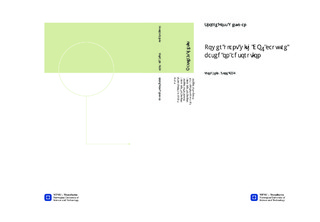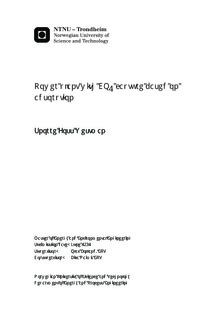| dc.contributor.advisor | Bolland, Olav | nb_NO |
| dc.contributor.advisor | Najmi, Bita | nb_NO |
| dc.contributor.author | Westman, Snorre Foss | nb_NO |
| dc.date.accessioned | 2014-12-19T11:48:42Z | |
| dc.date.available | 2014-12-19T11:48:42Z | |
| dc.date.created | 2012-11-08 | nb_NO |
| dc.date.issued | 2012 | nb_NO |
| dc.identifier | 565990 | nb_NO |
| dc.identifier | ntnudaim:7003 | nb_NO |
| dc.identifier.uri | http://hdl.handle.net/11250/234729 | |
| dc.description.abstract | A dynamic one-dimensional homogeneous model for a packed bed sorption-enhanced water-gas shift (SEWGS) reactor has been developed, describing the non-isothermal, non-adiabatic and non-isobaric operation of this type of reactor. The model was developed to describe a SEWGS reactor designed to work under operating conditions and syngas feeds encountered in a coal-fed Integrated Gasification Combined Cycle power plant utilizing an oxygen-fed gasifier. Different from previous integration designs reported in literature, the feasibility of leaving out the conventional high-temperature water-gas shift (WGS) reactor upstream of the SEWGS reactor has been investigated. The reactor was assumed to be packed with a mixture of K2CO3-promoted hydrotalcite CO2 adsorbent and commercial high-temperature FeCr-based water-gas shift catalyst pellets. Utilizing the reactor model, a mathematical modelling framework for the operation of eight SEWGS reactors in a SEWGS cycle has been developed. This system model accounts for all the necessary interactions between the reactors during the SEWGS cycle, including the exchange of mass in the feed, rinse, equalization and repressurization steps. In contrast to available open literature, the mathematical framework describes in detail how the necessary switches in the boundary conditions for the reactors have been realized.Simulations of several SEWGS cycles were carried out. The results were compared with experimental and modelling data from literature. Due to inconsistencies in the parameters and implementation of the model in the simulation software employed, results were in most aspects quantitatively not comparable to results from literature. However, the qualitative trends and physical mechanisms expected were observed and confirmed by the model. The temperatures in the reactors reached an unacceptable high level with respect to the tolerable operating conditions of the catalyst and adsorbent. It is planned to continue the work on the model, and implementing it within a full power plant model to investigate the effects of changes in the power production and thus the required amount of syngas to be treated. | nb_NO |
| dc.language | eng | nb_NO |
| dc.publisher | Institutt for energi- og prosessteknikk | nb_NO |
| dc.subject | ntnudaim:7003 | no_NO |
| dc.subject | MTENERG energi og miljø | no_NO |
| dc.subject | Energibruk og energiplanlegging | no_NO |
| dc.title | Power plant with CO2 capture based on adsorption | nb_NO |
| dc.type | Master thesis | nb_NO |
| dc.source.pagenumber | 151 | nb_NO |
| dc.contributor.department | Norges teknisk-naturvitenskapelige universitet, Fakultet for ingeniørvitenskap og teknologi, Institutt for energi- og prosessteknikk | nb_NO |

